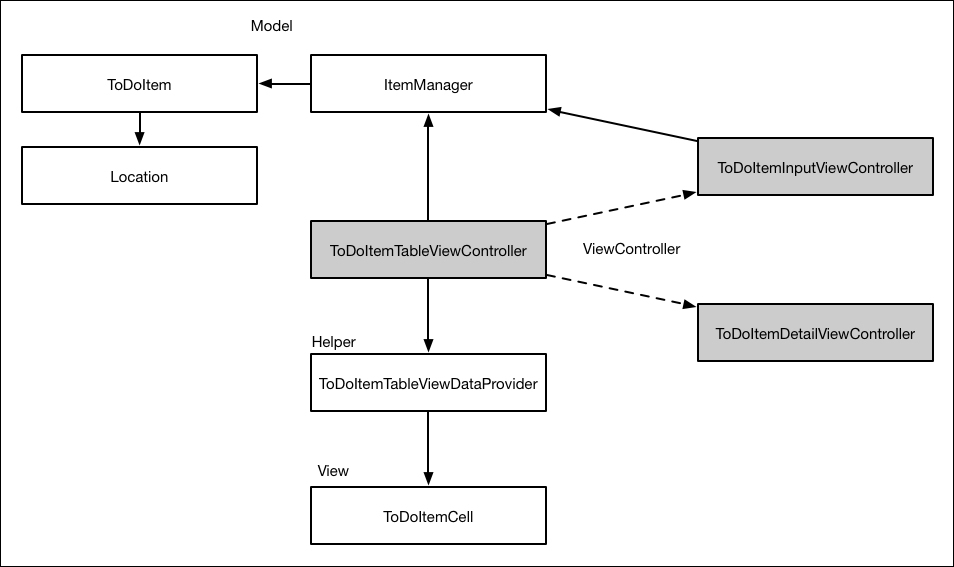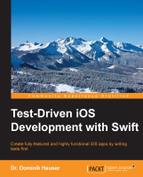The following diagram shows the structure of the app:

In iOS apps, data is often presented using a table view. Table views are highly optimized for performance; they are easy to use and to implement. We will use a table view for the list of to-do items.
A table view is usually represented by UITableViewController, which is also the data source and delegate for the table view. This often leads to a massive table View Controller because it is doing too much: presenting the view, navigating to other view controllers, and managing the presentation of the data in the table view.
It is a good practice to split up the responsibility into several classes. Therefore, we will use a helper class to act as the data source and delegate for the table view. The communication between the Table View Controller and the helper class will be defined using a protocol. Protocols define what the interface of a class looks like. This has a great benefit: if we need to replace an implementation with a better version (maybe because we have learned how to implement the feature in a better way), we only need to develop against the clear interface. The inner workings of the other classes do not matter.
As you can see in the preceding screenshots, the to-do list items have a title and, optionally, they can have a due date and a location name. The table view cells should only show the set data. We will accomplish this by implementing our own custom table view cell.
The model of the application consists of the to-do item, the location, and an item manager, which allows the addition and removal of items and is also responsible for managing the items. Therefore, the controller will ask the item manager for the items to present. The item manager will also be responsible for storing the items on disc.
Beginners often tend to manage the model objects within the controller. Then, the controller has a reference to a collection of items, and the addition and removal of items is directly done by the controller. This is not recommended because if we decide to change the storage of the items (for example, by using Core Data), their addition and removal would have to be changed within the controller. It is difficult to keep an overview of such a class, and because of this reason, it is a source of bugs.
It is much easier to have a clear interface between the controller and the model objects because if we need to change how the model objects are managed, the controller can stay the same. We could even replace the complete model layer if we just keep the interface the same. Later in the chapter, we will see that this decoupling also helps to make testing easier.
The application will have two more view controllers, a task detail View Controller, and a View Controller for the input of the task.
When the user taps a to-do item in the list, the details of the item are presented in the task detail View Controller. From the Details screen, the user will be able to check an item.
New to-do items will be added to the list of items using the view presented by the input View Controller.
In this book, we will build the app from inside out. We will start with the model, and then build the controllers and networking. At the end of the book, we will put everything together.
Of course, this is not the only way to build apps. But by separating on the basis of layers instead of features, it is easier to follow and keep an overview of what is happening. When you later need to refresh your memory, the relevant information you need is easier to find.
